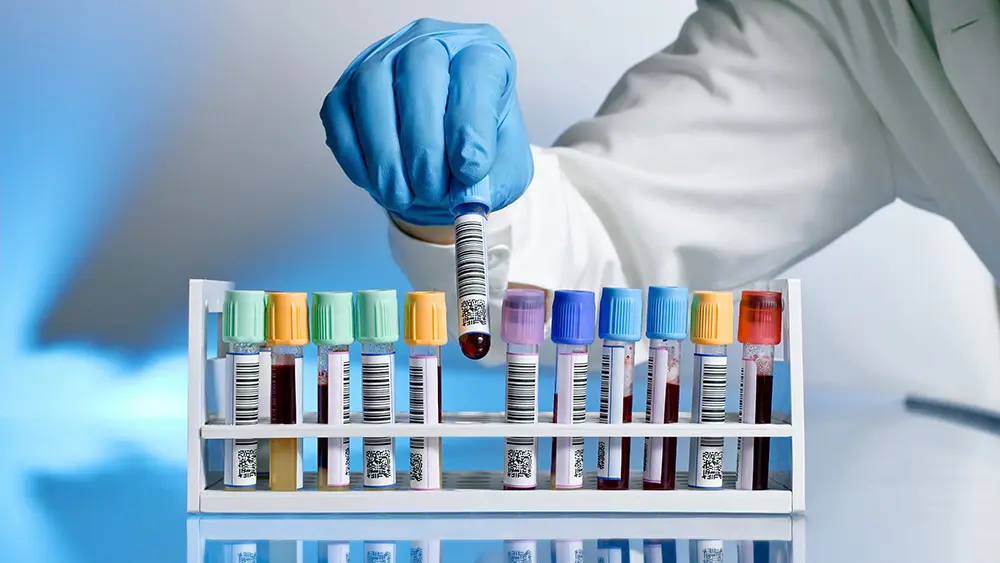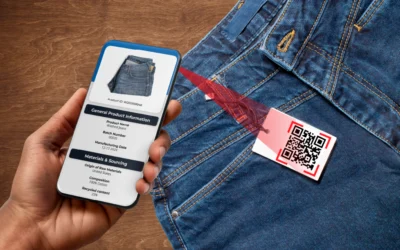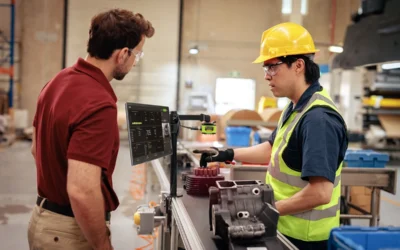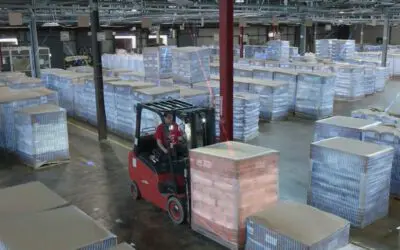In the United States alone, there are almost 200,000 diagnostic and medical laboratories in operation. That means there are a lot of samples being tested at any given time. In fact, experts put the number of clinical lab tests at more than 7 billion each year.
To accurately and effectively track such a large number of samples, you need a robust tracking system that has the flexibility to follow each sample from the moment it enters your lab and throughout its entire lifecycle.
Historically, barcodes have been synonymous with lab sample labeling. They’re easy to create and affix to specimen jars and vials. While they are incredibly useful, they do have one glaring drawback – they require physical effort.
Every sample has to be physically scanned during each stage of the sample’s journey. If a single step is missed, you’re lost traceability and you’ve broken the chain of custody.
The solution you need for your diagnostic or medical laboratory is an RFID solution.
Track and Locate Sample Faster with RFID
When you use RFID to identify lab samples, you can easily track them as they move through different processing stages in the lab without being forced to manually scan them. RFID is constantly scanning so there’s no fear of forgetting to scan a sample.
The moment it’s in range of an antenna or reader, the RFID tag signals the system and records the location of the sample. This eliminates the need to scan the barcode of each sample.
In addition, RFID helps locate samples faster and more efficiently. Some labs have dedicated employees whose only job is to locate specific samples. If something gets misplaced, it’s their job to find it. Depending on the size of the lab, it can take hours to find a single sample, wasting two of your most valuable resources – time and money.
With RFID antennas, you can trace it to a specific section of the lab and then use a handheld scanner to narrow down the search area to within a few feet. Not only does this free up your employees to spend time performing more important tasks, but it improves customer experience by reducing the time waiting for results.
The Importance of Maintaining Chain of Custody
Establishing and maintaining a chain of custody is very important if your samples might be used in legal proceedings. Oftentimes, labs are asked to process urine, oral fluid or blood samples for law enforcement, sports teams or insurance agencies. The results have to be very accurate and stand up in court. This requires an unbroken chain of custody.
In a typical setting, as the sample moves through the lab, technicians have to sign for every sample at hand-off. With RFID, you can automate that process by integrating employee RFID badges. When the sample is passed off, you simply scan your badge to confirm ownership. This gives you a more accurate chain of custody timeline and ownership tracking.
Best Practices and Use Cases for RFID in a Lab Setting
To get the most out of your RFID solution you should create a network that uses your RFID tags, scanners and antennas efficiently.
Labs can get pretty complex with the amount of equipment they need to do their jobs. To use the space more efficiently, install the readers and antennas under the tables. This allows the system to automatically scan every sample that lands at your station while keeping your lab more organized and clutter-free. Want to learn more? Click here to read how Aegis Laboratory used RFID to make their lab processes more efficient and accurate.
Another efficient use of an RFID solution is to use it to create zones within your labs. By mounting antennas in strategic locations, you can divide labs into individual zones. This lets you use RFID tags to track your samples as they move from one zone to another, giving you an accurate accounting of each sample and where it’s located.
When you’re accustomed to working with hundreds or thousands of samples at any given time, this is extremely valuable as it provides the location of every sample in real-time. Once you identify the correct zone, all you have to do is use a handheld scanner to narrow down the precise location. Want to learn more? Click here to read how NDX Green Laboratory used RFID to keep track of their dental products in a laboratory setting.
To make location tracking even more efficient, you can use RFID to perform facility mapping. Simply load a blueprint of your facility into your software and create customized zones based on your individual rooms. This also gives you the ability to review specific rooms and create reports of every sample located there.
It also provides facility mapping, reporting analytics, real-time location tracking. This lets us record dwell times and allows us to know how long different processes take in the lab.
Delivering RFID Value to Diagnostic and Medical Laboratories
MSM Solutions’ PortalTrack provides a perfect combination of an RFID solution that’s flexible enough to handle your growing operations, accurate enough to create more efficient tracking and easy enough so everyone in your company can use it.
Unique serialization of items, samples and specimens gives you greater inventory accuracy and security. Plus, it keeps your lab connected while offering these other valuable benefits:
- Automated chain of custody
- Lab station optimization
- Specimen verification and tracking
- Real-time sample location
- Rush sample expediting
- Improved shipment accuracy
- Proof of quality control
To learn more about how MSM Solutions can make your diagnostic or medical laboratory more accurate, productive and cost-efficient, reach out and contact us today.



